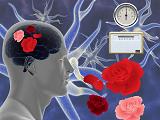MINET Projects
The projects being funded under the ‘Measuring the Impossible’ theme of the European Commission’s New and Emerging Science and Technology (NEST) initiative (which forms part of the 6th Framework Programme) address a wide and diverse range of research topics. What they all have in common, however, is that they involve the formation of new interdisciplinary partnerships between researchers, each with their different scientific backgrounds and areas of expertise. By pooling the creative potential of these researchers, and by utilising leading-edge scientific knowledge and technologies, the Measuring the Impossible projects hope to result in innovative theories and methods for the measurement of complex, multidimensional phenomena which are mediated by human interpretation and/or perception.
Details of all the Measuring the Impossible projects can be found here
Brief information on each of the projects is given below, with links to individual project webpages where available.
BioEMERGENCES
Towards the Measurement of the Individual Susceptibility to Diseases or Response to Treatments
Susceptibility to genetic diseases and responses to medical treatment are highly individual, depending in part on the genes and in part on the environment of the genes. BioEMERGENCES is establishing strategies and tools to measure variations between unaffected healthy individuals, between those with the same genetic defect, and between those receiving specific therapies. The results will facilitate the development of fully personalised treatments. The project will also enable high throughput preclinical tests of anticancer drugs using an artificially assisted, high resolution microscope system.
© European Commission
Brain Tuning
Tuning the Brain for Music
Music appreciation and music-induced emotions are common every-day phenomena to most of us. For example, certain pieces of music are loved by some but may be hated by others; many of us enjoy playing musical instruments; and singing brings a whole new level to communication and the ability to express one’s emotions. Music is a diverse and fascinating domain that influences our society in many ways. The Brain Tuning project will use the latest neuroscientific approaches and methods to provide new ways to investigate how music and music-induced emotions are processed in the brain. The results will be used to improve our quality of life, enhance learning and provide effective language therapy.
CLOSED
Closing the Loop of Sound Evaluation and Design
Despite being a promising and lively playground, sound design is not yet a solid discipline, due to the lack of design-oriented measurement and evaluation tools. The CLOSED project aims to close the loop of sound evaluation and design by developing an innovative but functional aesthetic sound measurement tool that can be profitably used by designers. At one end, this tool will be linked with the physical attributes of sound-enhanced everyday objects; at the other end it will relate to the emotional response of the user. The measurement tool will comprise of a set of easy-to-interpret indicators, which can be integrated in the product design process to facilitate the control of the sound-related aspects of objects, functionalities, and services encountered in everyday settings.
COBOL
Communication with Emotional Body Language
Without words being exchanged, a person’s body language can attract or repel, signal welcome or create fear. It is a powerful mode of communication that is hardly understood in objective scientific terms. The COBOL consortium’s proposal to develop a new theory for measuring the components of body language could form the basis of more reliable tools for detecting criminals, deterring terrorists and studying degenerative diseases.
© European Commission
EyewitMem
The Assessment of Eyewitness Memory: a Multi-Componential Correspondence-Oriented Approach
Eyewitness testimony forms an important part of the justice system. Even when they mean to tell the truth, however, eyewitnesses can be surprisingly unreliable. EyewitMem aims to reduce injustice by bringing a more scientific approach to evaluating eyewitness testimony. Experts in memory, forensic psychology, neuroscience, artificial intelligence and the law will work together, using state-of-the-art developments in their respective fields, to gain insights into the mechanisms and determinants of memory accuracy and to develop instruments that can serve as diagnostic tools in evaluating the accuracy of memory reports. The outcomes will help police officers and judges evaluate the likely reliability of individual witnesses.
FEEL EUROPE
European Expert Platform for Measuring Human Feelings and Emotions
Feeling represents the subjective experience aroused by our response to the physical world – from joy to despair, security to fear. Such reactions differ from person to person, but they influence many aspects of human decision-making, even down to basic purchasing choices. Feel Europe will help to define and develop novel kinds of technical cognitive systems, with the ability to understand human behaviour and provide a basis for the development of improved human-machine interfaces. Work in the project will focus around a workshop on the topic “measuring human feelings and emotions”. New ideas for European and worldwide R&D-activities are expected as a result of the workshop, including innovative interdisciplinary cooperations.
FUGA
The Fun of Gaming: Measuring the Human Experience of Media Enjoyment
The main objective of the FUGA project is to create novel methods and improve existing measures in order to examine how the different aspects of the gaming experience (e.g., different emotions and cognitions) can be assessed comprehensively with high temporal resolution. The operational goals of FUGA include establishing the construct validity, reliability, and predictive validity of game experience measures that are based on different measurement techniques (e.g., psychophysiological recordings, brain imaging). A further goal is to develop a prototype of an emotionally adaptive game. The innovative measurement approach provided by FUGA can be applied when designing new digital games for different purposes.
MEMORY
Measuring and Modelling Relativistic-Like Effects in Brain and NCSs
When we view the world around us, we observe a stable image, despite frequent rapid body and eye movements. How the brain accomplishes this interpretation remains only partially understood, although it is known to involve short-lived perceptual distortions of space and time. The aim of MEMORY is to explore this complex mechanism and to reproduce it on a distributed computer system. The findings could lead to improved man/machine interfacing, and more sophisticated robots. MEMORY may additionally shed light on our understanding of neuronal mechanisms, leading to the development of possible aids for diseases related to misperception of external space, such as in Alzheimer’s and Neglect patients.
© European Commission
Mind Bridge
Measuring Consciousness: Bridging the Mind-Brain Gap
How can the human brain transcend its physical structure to create conscious experiences and a sense of self-awareness? The MindBridge partners believe they are ready to answer the question that has so far defeated all comers. They believe that by pursuing the challenge on all fronts – including subjective accounts and behavioural studies of learning and memory, as well as brain scanning – they will be able to crack one of science’s last great problems: what are the causes and mechanisms of consciousness?
© European Commission
MINET
Measuring the Impossible Network
Seeking to provide a reproducible basis for qualifying and quantifying what are essentially ‘soft’ measurements (subject to human perception) is a particularly challenging scientific endeavour. Individual projects in the NEST Pathfinder Measuring the Impossible (MtI) programme are addressing various aspects of this problem. The MINET project aims to maximise their outcomes by promoting synergy and information exchange, with the longer-term goal of building a broad Europe-wide MtI community.
© European Commission
MONAT
Measurement of Naturalness
Natural materials are generally perceived as highly desirable materials that can command high prices, having an innate beauty that is hard to emulate in synthetic products. For example, silk, cashmere, leather, angora, walnut and rosewood all have a long history of being associated with quality, craftsmanship and exclusivity – factors that have been exploited in markets as diverse as packaging and textiles. Artificial materials, on the other hand, are often cheaper, more durable and less scarce than their natural counterparts. The MONAT project aims to establish the chain of perception for naturalness based on relevant sensory inputs, to enable relationships between the physical attributes of the material and the neural and cognitive processes to be identified. Ultimately, the project will help manufacturers create artificial materials that are more like ‘the real thing’, making luxury more affordable and saving precious natural resources. It will also serve as a feasibility study for further work in the area of ‘sensory metrology’ i.e. for the prediction of perceptual responses to materials and objects based on their measured physical properties.
PERCEPT
Perceptual Consciousness Explication and Testing
The PERCEPT project is pioneering an approach for quantifying and explaining a person’s subjective interpretation of visual material. This will be achieved through the rendering of ‘Interpretation Maps’ (IM) – visualisations of a person’s emotional and attentional states coupled with gaze direction and on-line scene analysis – which will be developed using the latest neurophysiological and behavioural methods and techniques. PERCEPT’s principles will be demonstrated with masterpieces of European art and scientific images. The project will also begin to explore the application of IM in medicine, education, geosciences, human-machine interfaces, industrial design and product evaluation.
SOMAPS
Multilevel Systems Analysis and Modelling of Somatosensory, Memory, and Affective Maps of Body and Objects in Multidimensional Subjective Space
There is much more to our sensations of touch, temperature and pain than the simple responses created by single receptors on the surface of the body. The SOMAPS project will study how complex stimulation patterns on the skin are processed by the central nervous system and how memories and emotions can affect the resulting perceptions. Using an integrative approach of “somaesthetics”, bringing together stimulus, brain, context and perception, the project will seek to make direct predictions from the stimulus domain to the subjective (haptic perception) domain. Ultimately this may have practical applications in psychology, medicine, virtual reality and the design of everyday products.
SynTex
Measuring Feelings and Expectations Associated with Texture
Although we may not be aware of it, texture provides us with information that triggers certain emotional qualities and expectations. For example, we all know that stepping carelessly onto a wet marble floor might cause us to slip, but that running on grass in the park is safe; even if we fall we’re unlikely to get hurt. The SynTex project will investigate feelings and expectations that people associate with textures, using methods such as self-report tests and fMRI studies. The characteristic properties of visual and tactile textures will be investigated and a model will be built to predict and measure the qualities of a specific texture, using fuzzy logic to account for the inherent fuzziness of such qualities. This research could lead to new tools for the design of surfaces on and in buildings, consumer products and even the interfaces of software and web pages in the virtual world.
SysPAQ
Innovative Sensor System for Measuring Perceived Air Quality and Brand Specific Odours
The main goal of the SysPAQ project is to develop an innovative system to measure indoor air quality as it is perceived by humans, to be used as an indicator and a control device for indoor air quality. The system will also be able to detect brand specific odours and it will serve as a novel interior odour design tool for the vehicle industry. Such an innovative sensor system is likely to find many applications: humans spend about 90% of their time indoors, either at work, at home or when commuting between work and home, and recent data shows that improved indoor air quality will result in fewer complaints, increased comfort, less health problems and higher productivity. Consequently, quality of life will be improved.












[…] Projects […]